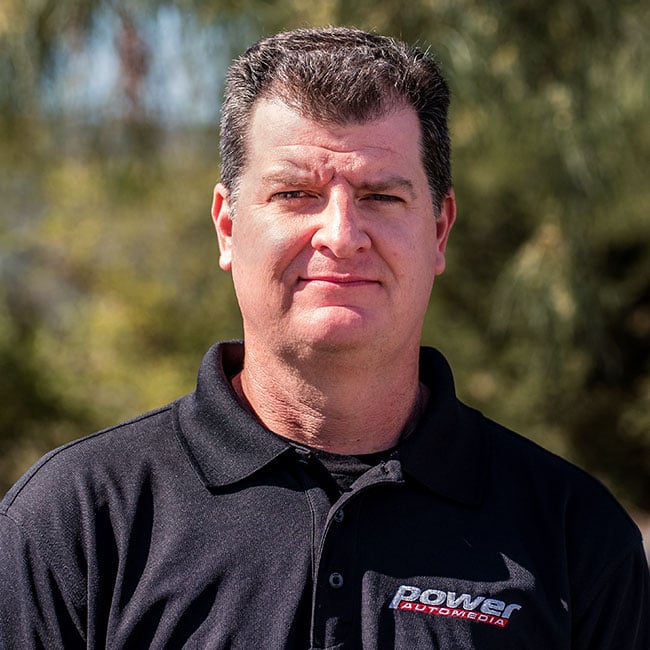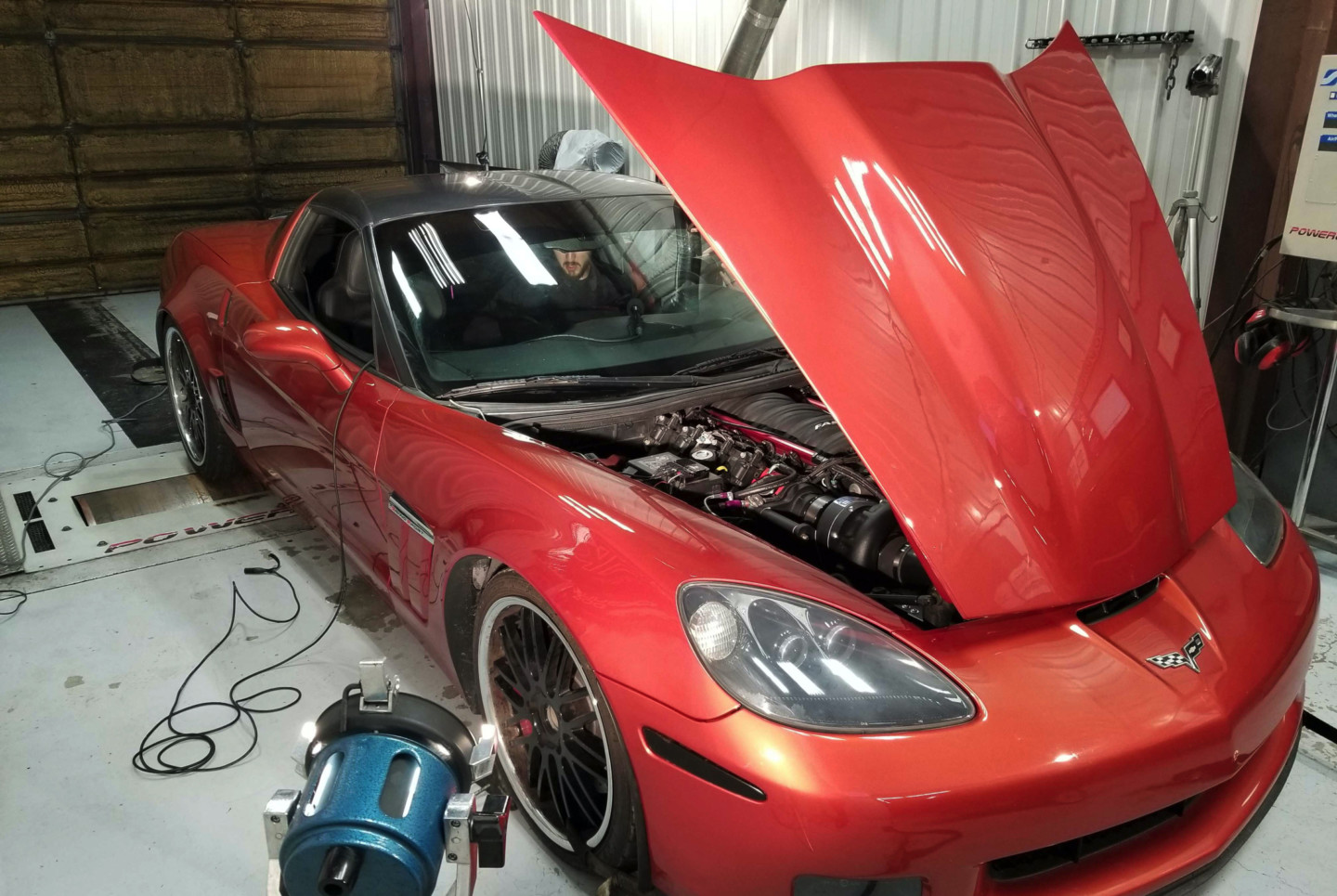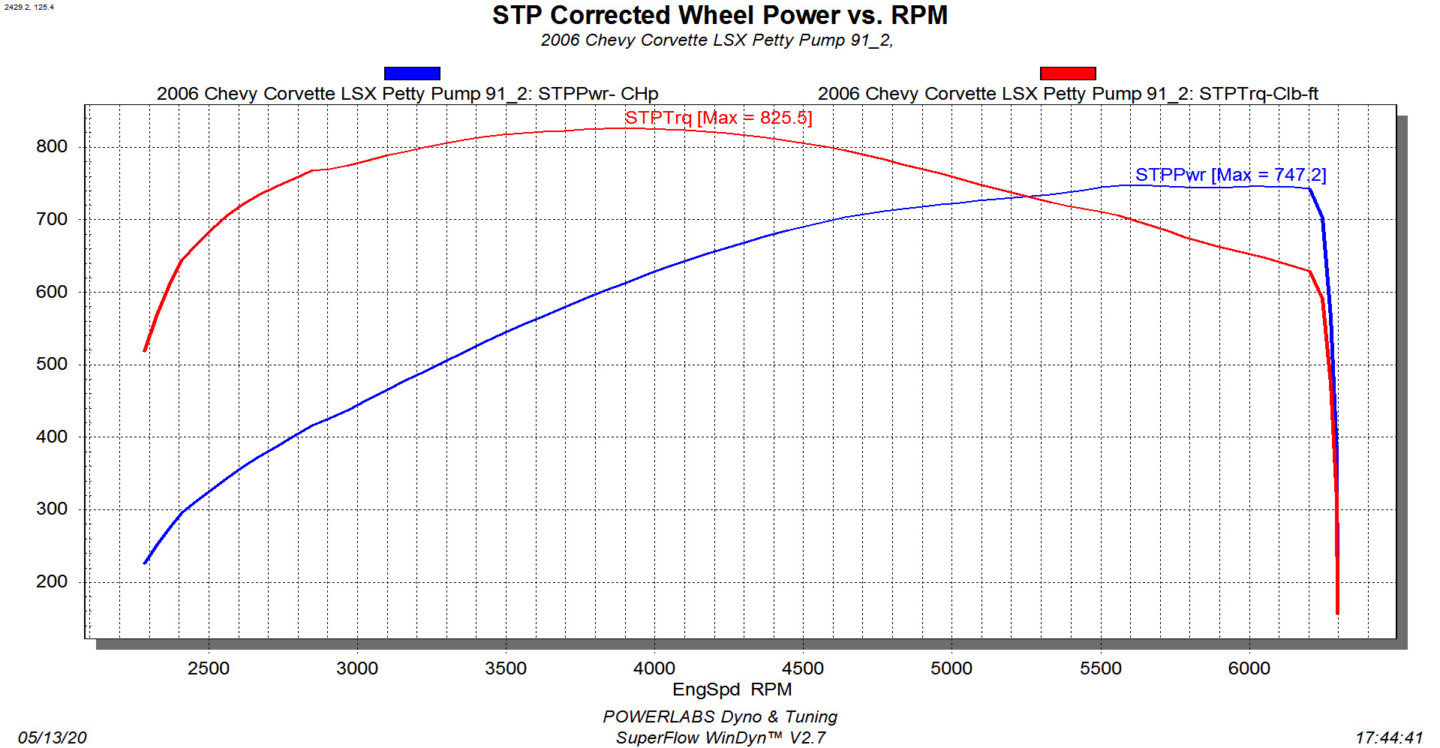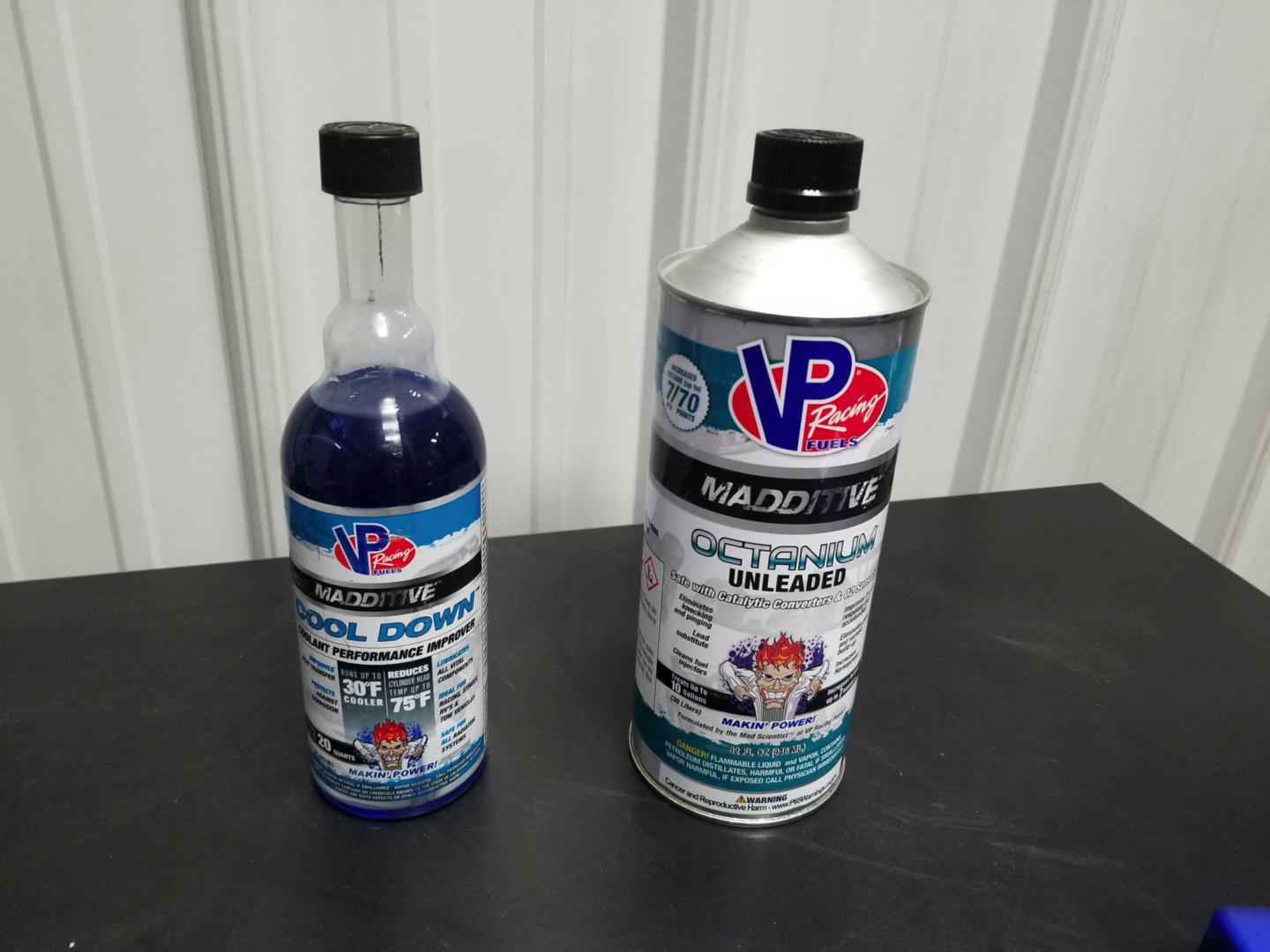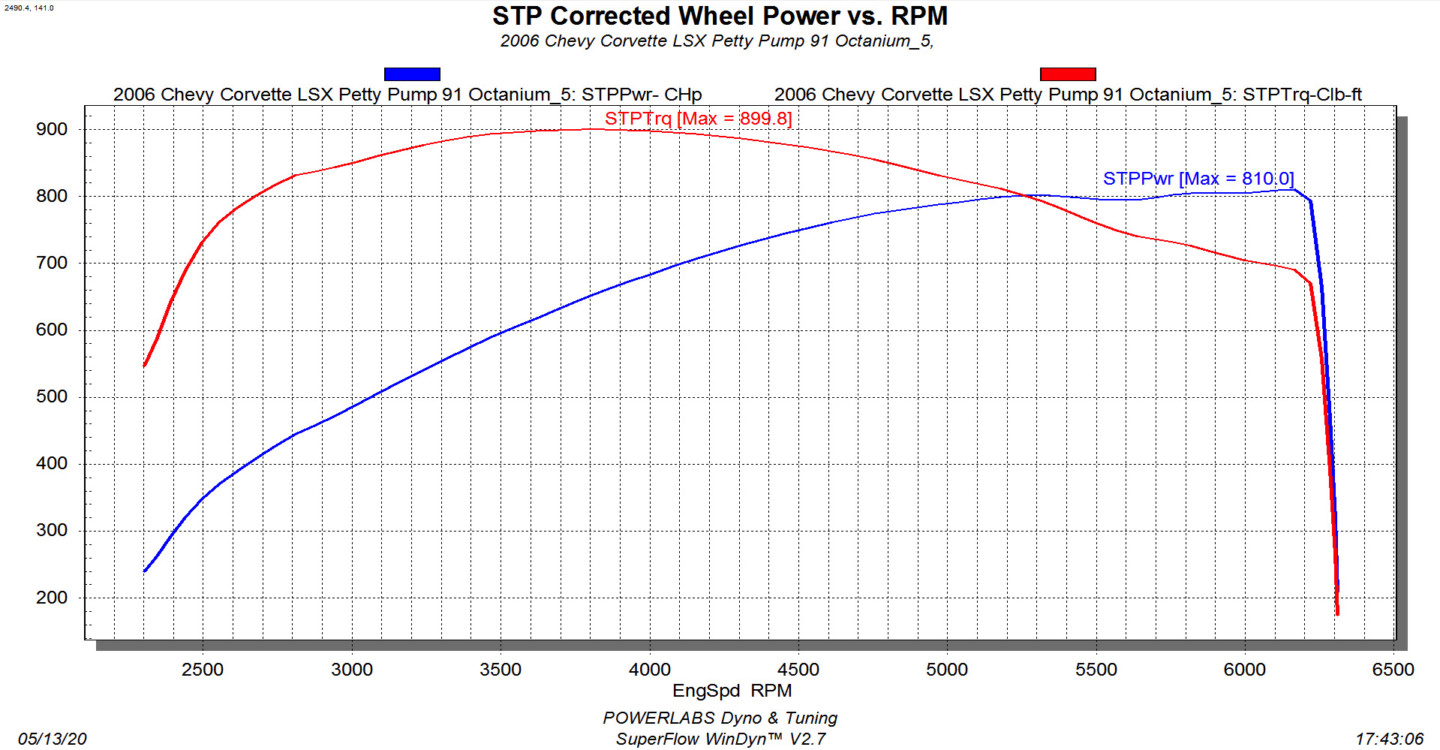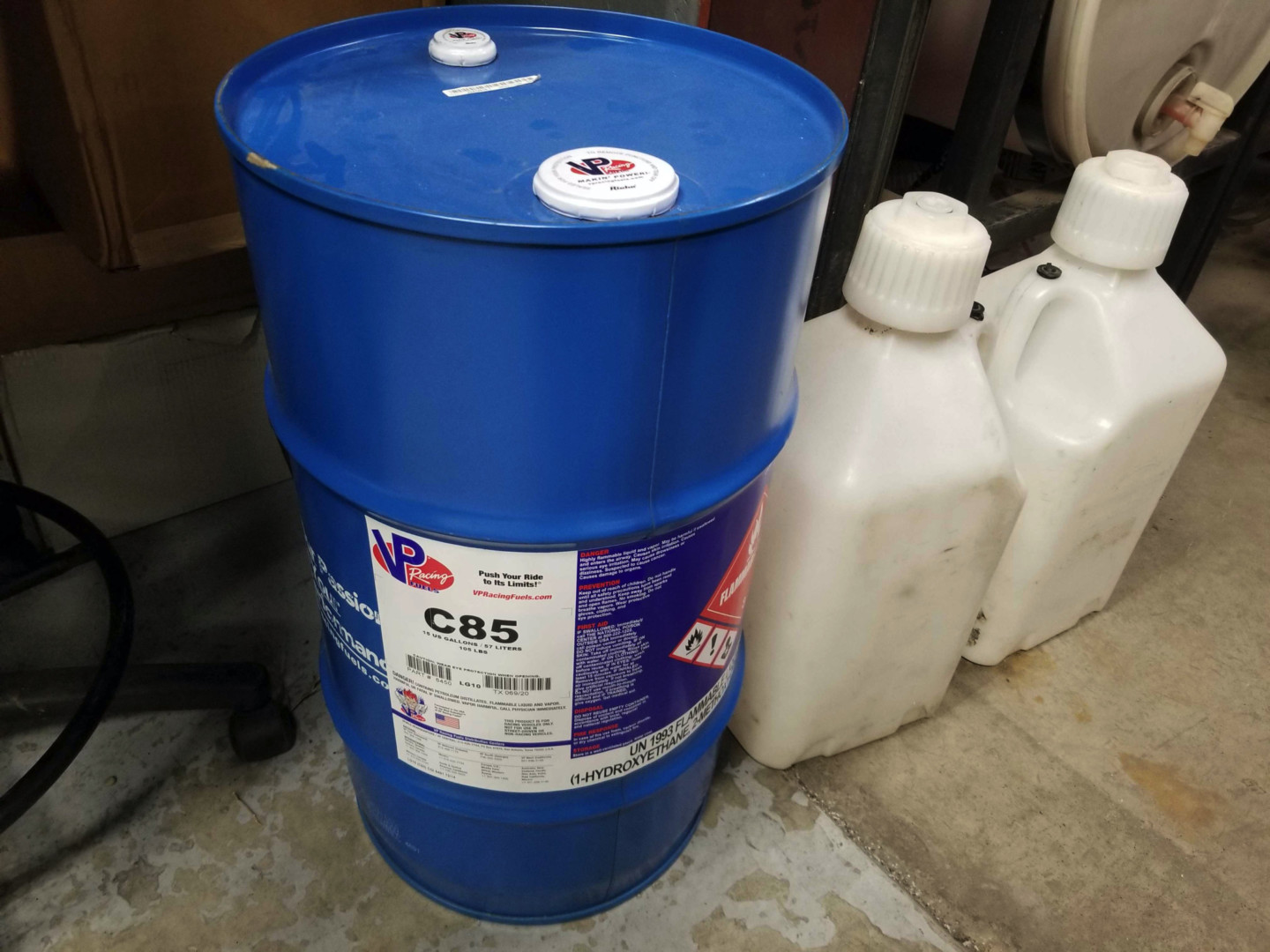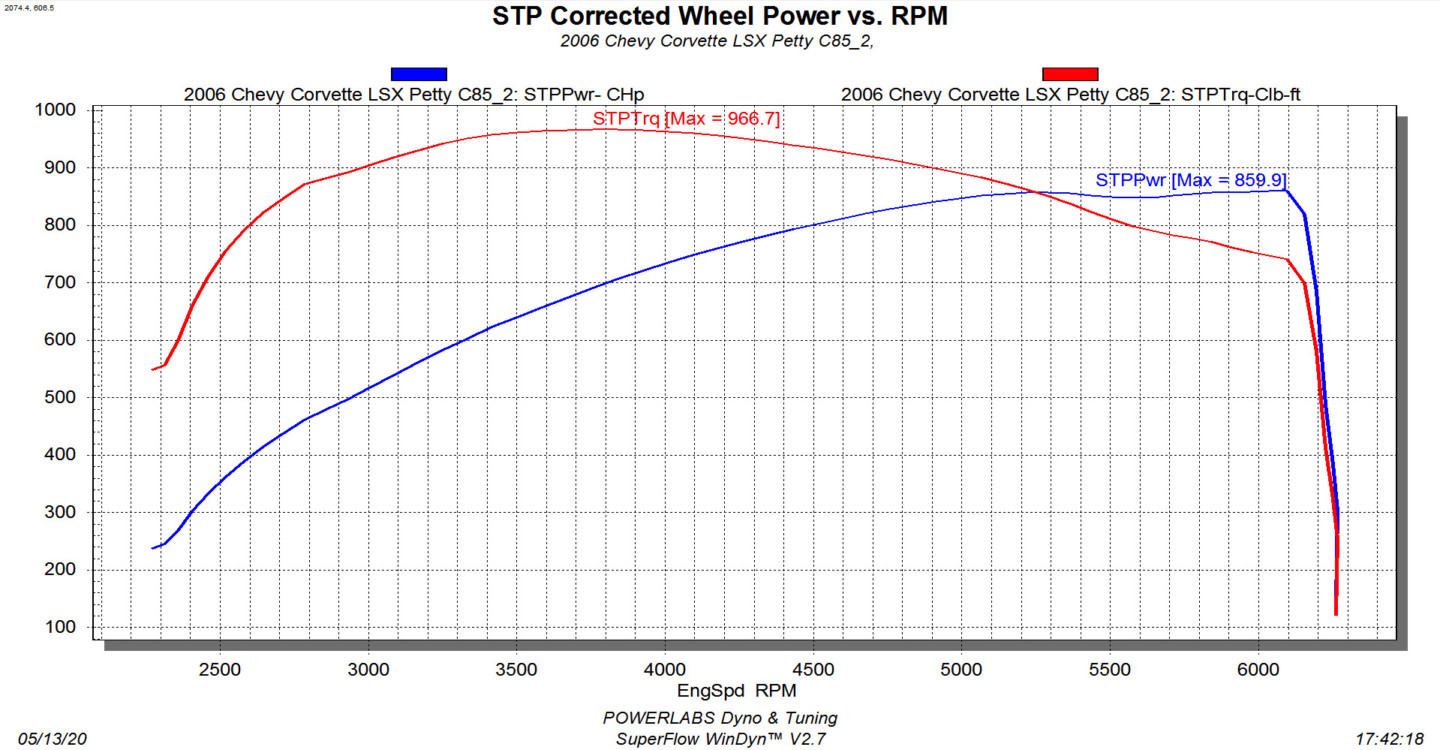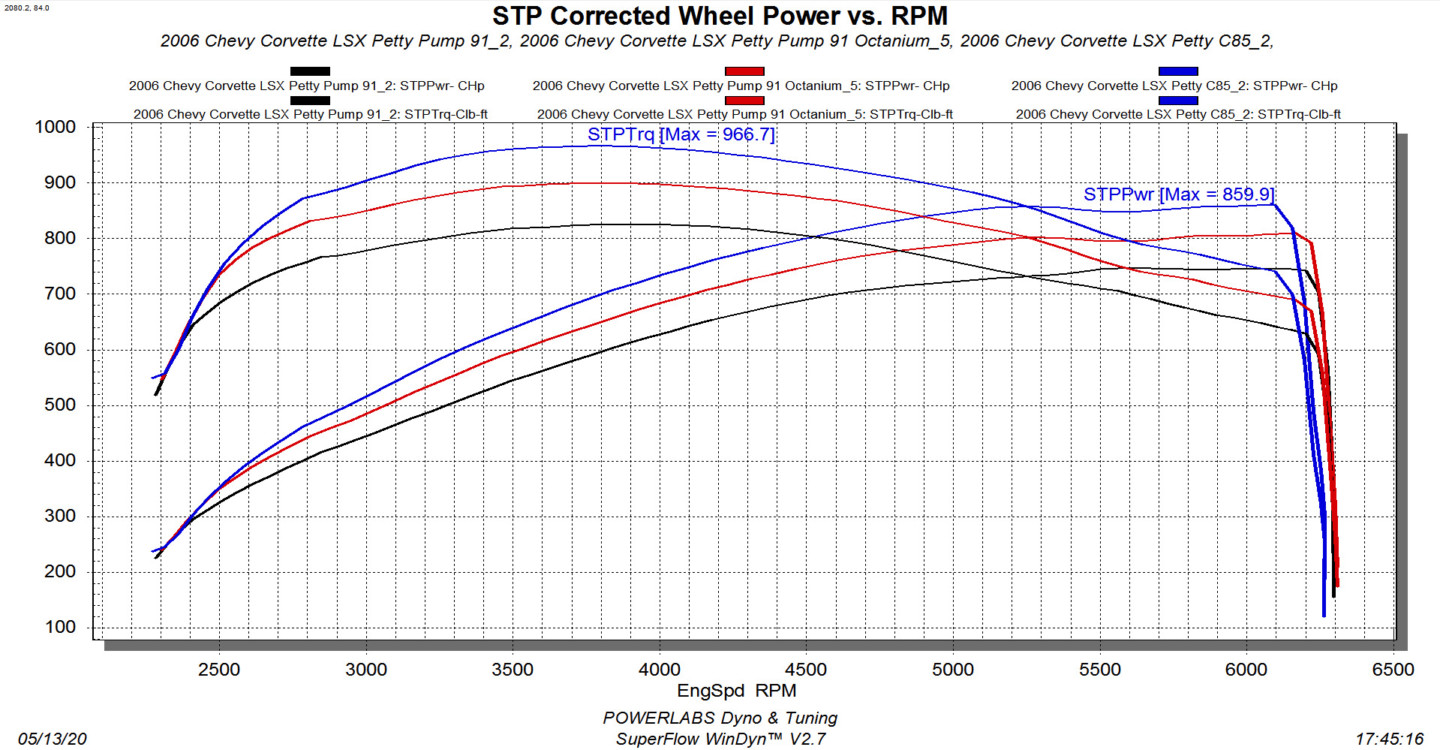A common problem — depending on where you live — is getting the best fuel for your car. Fortunately, in our area, we have 93-octane gasoline, which is okay for our street cars to get around town. However, when we want to crank up the boost, we then resort to race gas for off-road use. You’ve heard that E85 is all the rage at the pump, but we don’t have that option. The nearest E85 station is about an hour away. In this article, we will test some additives and fuel options, and fill in the gap between pump gas and race fuel with the help of VP Racing Fuels. We will also see how much more power we can make on VP’s C85 fuel over pump gas.
The Test Mule
Our subject for this experiment will be a 2006 C6 Corvette. We have done a few articles on this car which currently has a plethora of modifications that any C6 owner would approve. The engine is an LSX376-B15 from Chevrolet Performance with a ProCharger D1SC-1 that force-feeds through a FAST LSXR intake manifold. Other mods include a Hughes Performance built transmission and torque convertor, FAST ignition coils, Aeromotive fuel system, and a set of Fuel Injector Clinic (FIC) 1440cc injectors.
If you have a full-blown race car, odds are you’re going to buy race gas or some mix of ethanol. If you own a high-performance street car, race fuel tends to get super expensive and becomes a pain because you can only store so much at once, not to mention it’s only intended for off-road use. And like we said before, ethanol is a great option, but not everyone has access to it. So, what are your options?
VP Racing Fuels has three products that we are very interested in examining for the street car crowd. The first item is a fuel additive called Octanium Unleaded, which is a fuel additive specially blended for performance applications. It increases the octane up to 8 numbers or 80 points. The second product is a cooling system additive called Cool Down. Cool Down improves coolant performance and is safe for all radiator systems. It is ideal for racing, street, RV, and tow vehicle applications. The final item we will be testing is VP’s C85 ethanol fuel, which is for off-road use. VP blends this fuel with consistent proportions of ethanol, making every container uniform with another. This fuel can make up to 4-percent more torque and power than conventional E85.
Base Pull
With the car on location at Power Labs Dyno & Tuning, the guys strapped down the C6 and got it ready for a baseline run with 91-octane pump gas. The Corvette has been on the dyno several times in the previous weeks, so there were no surprises. As the Corvette spun the rollers, the car made an impressive 747 horsepower and 825 lb-ft of torque. After the pull, the guys noticed the slightest bit of knock, letting us know we were on edge with our ProCharged pump-gas combination.
The Goods
It was time to give VP Racing’s Octanium Unleaded a try, but what is it exactly? For this question, we turned to the pros at VP Racing to get the details on this fuel additive. Steve Patti, vice president of marketing for VP Racing Fuel, was more than happy to give us the skinny on the products.
Patti says, “Octanium was developed as a real solution to improve fuel octane of gas for track day and off-road use in automobiles and power sports vehicles. Due to the success and popularity of Octanium, Octanium Unleaded was developed to make it safe for vehicles with catalytic converters and O2 sensors.” Patti continues, “Octanium will raise octane by up to 8 numbers, while Octanium Unleaded will raise octane by up to 7 numbers — no matter the octane rating of the gas. What will vary is the final octane value based on the starting octane of the fuel. For instance, if the starting octane of the fuel is only 87, then the maximum final octane results might be 94, whereas starting with a higher octane fuel will lead to a higher final octane result.”
Patti also gave us a breakdown on VP’s product, Cool Down™. He says, “Cool Down is a coolant additive that extends the capability of any coolant by improving heat transfer and lubrication of your cooling system components while protecting against corrosion. It can reduce engine temperatures by up to 30-degrees Fahrenheit, and cylinder head temps up to 75-degrees. For straight water applications, adding 50-percent more Cool Down is recommended. The advantage of adding Cool Down to antifreeze instead of water for street applications is its ability to retain freeze protection.”
Now, before we go any further, we have all used some products that promise more horsepower, torque, and better fuel economy. In our experience, we have been left high and dry, seeing little or no gain with these types of additives. Were we skeptical of VP’s additives? Yes. But, even if we saw zero knock from the sensors due to the added octane and cooler engine temperatures, it would be a win in our book. The question on everyone’s mind was, would these additives make a difference?
More Octane And Cooler Temps
We grabbed the bottle of Octanium, poured it into the tank, and put some Cool Down in the cooling system. With our fingers crossed, we spun the rollers up once more with the same tune as before. Surprisingly, the knock we experienced in the previous pull had vanished, and the C6 put down more power than before. With no changes other than the additives, the ProCharged combination picked up 11 horsepower and 9 lb-ft of torque. The Octanium had worked — and quite well. So well, that we decided to do some tuning and to see what gains were to be had.
We made a few more pulls with the 91/Octanium Unleaded mix, and every time, the C6 made more power than before. The guys kept adding a degree of timing between pulls and miraculously, we didn’t experience any knock retard, and the dyno numbers kept going up. We finally called it quits after several pulls. The ProCharged 376LSX made 810 horsepower and 899.8 lb-ft of torque. The Octanium pump gas mix was good for an increase of 63 horsepower and 74 lb-ft of torque to the wheels! The Octanium Unleaded worked unbelievably, but what about the Cool Down?
We pulled the data logs on the engine, and the Cool Down was making a difference, even on a crisp 60-degree day. On the first dyno pull, the C6 started at 176-degrees and was at 181-degrees when we shut the car off. With the Cool Down added, we started the pull at 174-degrees. After the pull, the temperature only made it to 177. While this may seem like a small gain, keep in mind that this is on a car that is infamous for getting hot, and we were sitting still on the dyno with insufficient airflow. We will check back in on this product after the temperatures start to rise during the summer months.
C85 Versus Pump Gas
Finally, it was time to put the boosted C6 on some ethanol and see what kind of power was capable. When we built this car, we knew that E85 was best for our application. As far as pump gas goes, ethanol is the king of the gas stations due to its high octane. The only problem is, the fuel seems to be inconsistent, depending on when and where you purchase it. It’s for this reason we selected VP’s C85 fuel.
Patti states, “E85 (or flex fuel) is an industry term that refers to ethanol-gasoline blends containing 51- to 83-percent ethanol, depending on geography and season. C85 is a specific fuel manufactured by VP Racing Fuels that is blended with high quality, pure components, and a consistent proportion of ethanol to deliver up to 4-percent more power and torque than conventional E85. C85 works well in drag racing, circle track, off-road, and virtually any other automotive application (except those in which fuel injectors are not compatible with ETBE or MTBE).”
We then emptied the C6 fuel tank and added in the C85 fuel and once again hit the rollers. With some slight tuning changes, our first pull put down 851 horsepower and 940 lb-ft of torque. But we were just getting started. After a few more pulls, the guys were able to get our ProCharged street car to a max of 859 horsepower and 966 lb-ft of torque.
The C85 generated 109 additional horsepower and 141 lb-ft of torque more than we were able to make on just 91 octane gas from the pump. That’s a serious gain only by switching the two fuels.
Conclusion
When comparing the dyno pulls with C85 and 91 Octane with Octanium Unleaded, the results are not as drastic. Basically, C85 made 49 extra horsepower and 67 lb-ft of torque more than we could extract out of the Octanium blend. While the C85 is the clear winner, if you don’t have access to ethanol, Octanium is a fantastic addition to any street car that lives on the edge.



